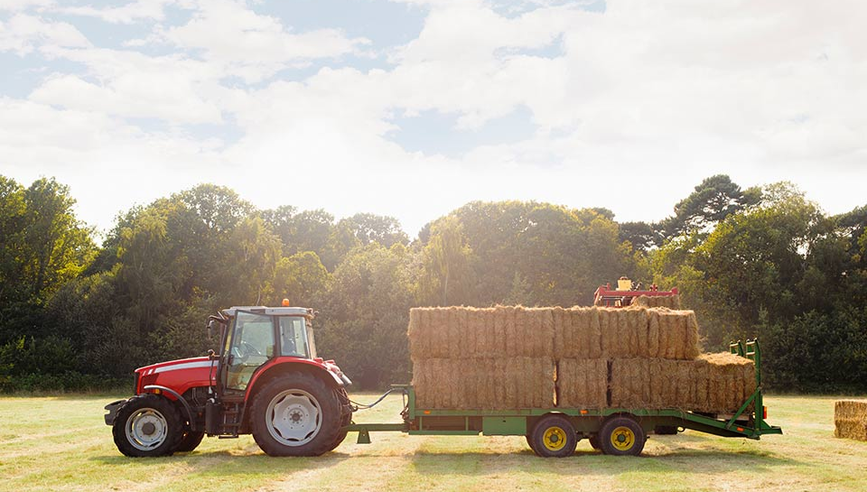Reducing Hay Stack and Hull Pile Storage Fire Risk


Agricultural commodities stored in bulk share an intrinsic danger; the decomposition of organic material which can generate heat and spontaneously ignite. The risk of fire is real and can be hidden from sight until it’s too late. However, you can minimize the risk by properly curing and drying the commodity before storing to reduce its moisture content and store it so it’s not exposed to the elements. In most cases, monitoring the core temperature of the commodity is the only way to determine if it’s in danger of spontaneous combustion.
Harvesting and storage practices play a critical role in minimizing the risk of fire. By following industry practices related to controlling the moisture content of the commodity, the risk can be significantly reduced. Once stored in bulk, the exposure can be managed by routine monitoring and early detection of a rise in temperature. Depending on conditions, actions can be taken to reduce spontaneous combustion or minimize damage to nearby equipment and structures. Here are some tips for storage practices:
Hay Storage Best Practices
- Don’t bale hay until it has a moisture content of 20% or less.*
- Maintain a minimum of 100 feet of clear space between stacks, property lines, fences, structures, roads and railroads.
- Once the hay is stored in bulk, monitor the hay temperature for up to six weeks after baling.
- If the core temperature is greater than 175 degrees Fahrenheit, fire is imminent; call the fire department immediately.*
There are several clues that indicate the commodity’s core temperature may be rising:
- Steam rising from the stack.
- Unusual odors (e.g. pipe tobacco, caramel, burning, musty).
- Moisture build-up on rafters or roofing iron.
- Corrosion on underside of tin roof.
- Slumping of an area of bales.
Hull Storage Best Practices
- The ideal way to store a hull pile is on a concrete pad, raised dry surface and/or under cover.
- Separate the product so that wetter hulls are stored furthest away from structures and other piles.
- Monitor the piles for moisture; either manually probing the pile to obtain its temperature or via thermo coupling wire at each auger pole.
- Avoid compacting hull piles by driving over them with a loader or by continuously pushing hulls upwards as one does when creating a silage pile.
- If a tarp is deemed necessary, the color can play a role in minimizing temperatures; consider a white-on-black tarp (white facing out), especially for piles with higher moisture.
* See Determining Forage Moisture Concentration, Virginia Cooperative Extension (VCE) publication 442-106



